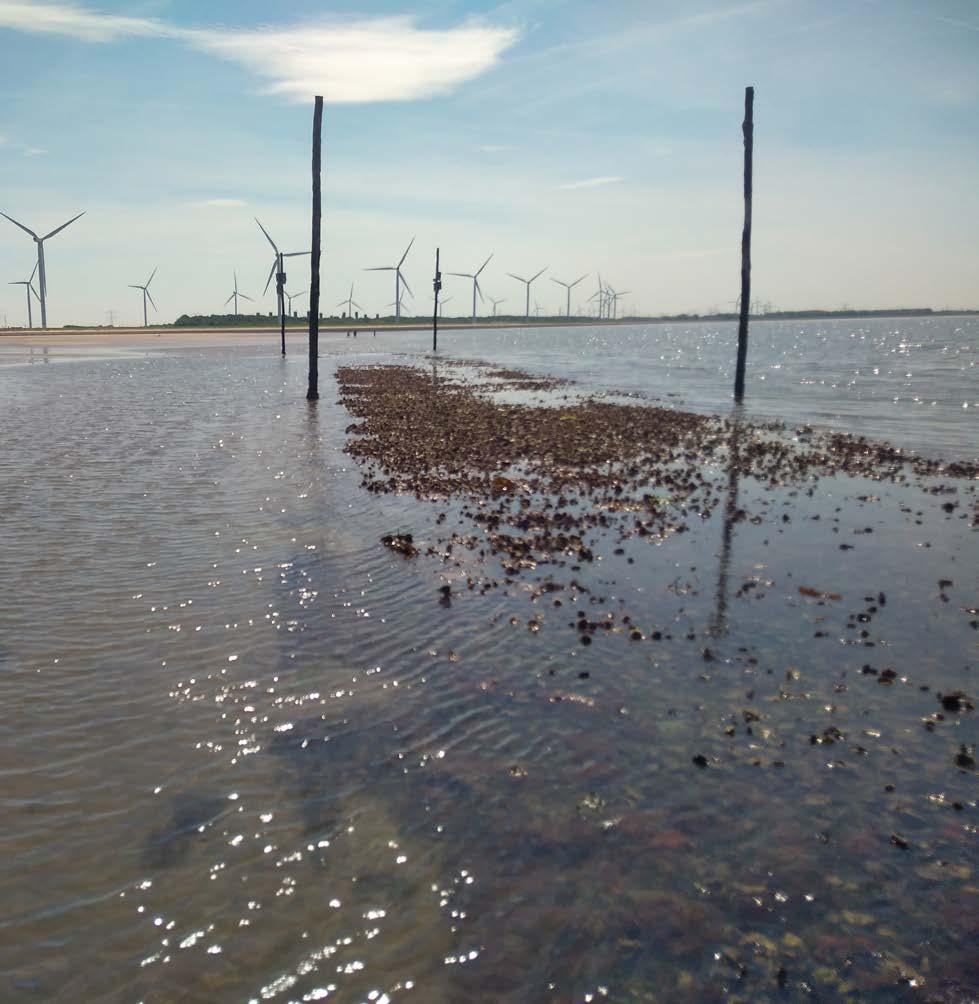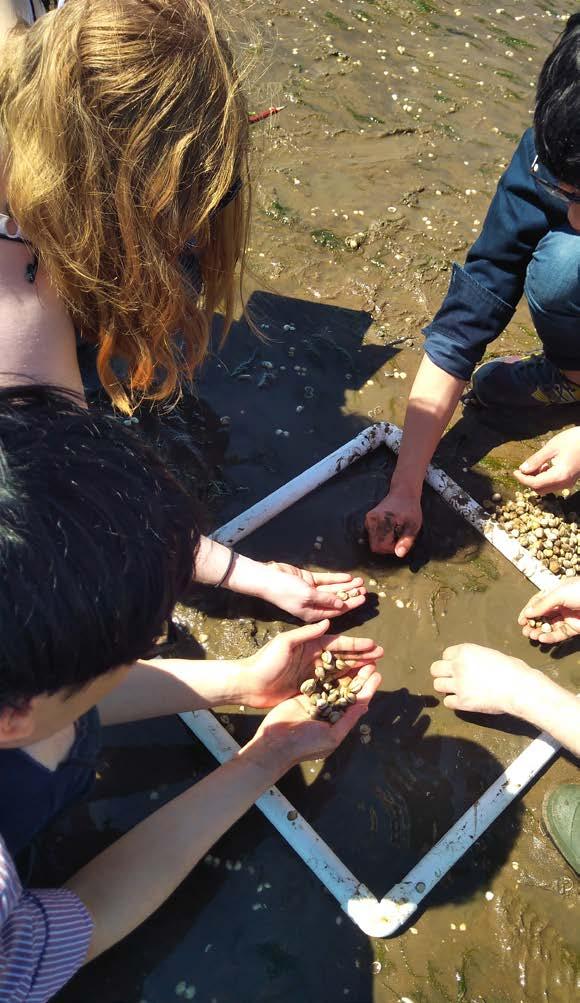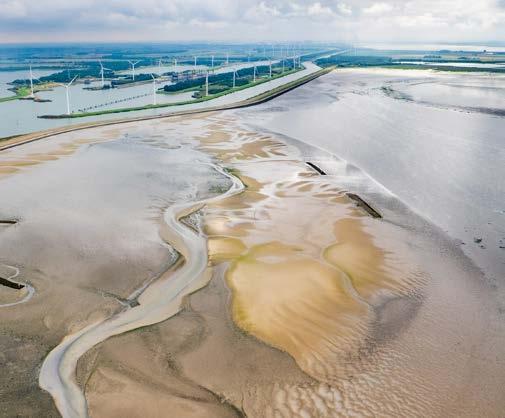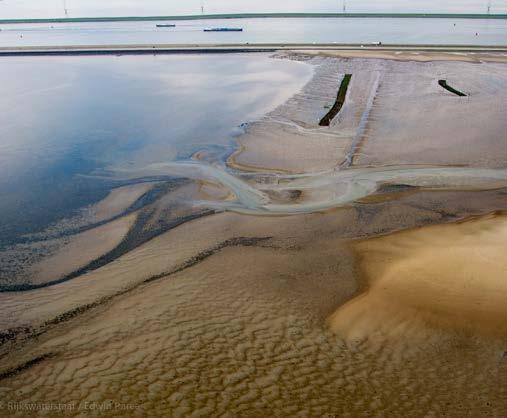
4 minute read
Oesterdam Sand Nourishment Project
Oesterdam, Eastern Scheldt, the Netherlands
After construction of the Eastern Scheldt storm surge barrier in 1986, the Eastern Scheldt tidal basin started to evidence a strong increase in the rate of intertidal flat erosion—at a rate of 45 hectares per year. This sharp increase affected the available feeding time for important migrating bird species; the lowered foreshore also resulted in a wave load increase on the dikes. To mitigate these impacts, the Ministry of Infrastructure and Water Management (Rijkswaterstaat) researched possible solutions and implemented the Oesterdam Sand Nourishment Project in 2013. The project consisted of dike foot nourishment and large-scale nourishment around the tidal flat, with a total volume of approximately 460,000 million cubic yards of sand. To prevent nourishment erosion, a number of man-made oyster reefs were placed along the edges of the nourishment. Monitoring conducted during the period of 2013-2017 revealed fast recovery of benthic species and biomass following the nourishment effort. The sand nourishment prevented the tidal flat from eroding further and created a sheltered habitat for benthic species on the tidal flat. The reefs develop over time into living solid structures, with only a small effect on nearby sand stabilization. The monitoring was executed by the partners of the Centre of Expertise Delta technology: HZ University of Applied Sciences, the Royal Netherlands Institute for Sea Research, Wageningen Marine Research, and Deltares.
Article cover: Oyster reefs at the front of the sand nourishment, 2017 (reef dimensions: 100 x 8 m, 330 x 26 ft). (Photo by Matthijs Boersema)
Producing Efficiencies
Along the Dutch North Sea coast, large sand nourishment projects are preventing erosion of the coastline. This “soft solution” is a proven concept, but it had not yet been implemented in tidal bays like the Eastern Scheldt. Wave modeling shows that the sand nourishment at the dike foot resulted in a lowering of the wave load and forestalled dike maintenance. Oyster reefs can act as bioengineers, and this knowledge was used for the design of several artificial reefs, in the hopes that the reefs would develop into living structures capable of effectively trapping sediment.
Using Natural Processes
Waves and tides are transferring sand from the nourishment area to the tidal flat, preventing further erosion. The created shelter behind the nourishment area supports the development of benthic species. The man-made oyster reefs, initially consisting of oyster shells in iron mesh cages, are developing into living reefs that are strong enough to resist wave load. In the longer term, these reefs will grow with the rising sea level.

Broadening Benefits
After the Oesterdam Sand Nourishment Project was completed, many people became attracted to this area for sport and recreation, with kite-surfing becoming particularly popular. The valuable tidal flats are now better protected, and birds are using the area to feed on shellfish. Since the dike foot nourishment is decreasing wave load, dike maintenance can be postponed, resulting in a direct economic benefit.

Promoting Collaboration
In 2010, the collaborative process was initiated with the Ministry of Infrastructure and Water Management; the environmental conservation organization, Natuurmonumenten; and the province of Zeeland—all having agreed to promote and support environmental protection at the project location. The project team consisted of members from several organizations, such as the Rijkswaterstaat, the HZ University of Applied Sciences, Wageningen Marine Research, Deltares, and the Royal Netherlands Institute for Sea Research (NIOZ). Several stakeholder meetings were organized to focus on mutual interests and to address local stakeholders’ concerns. Monitoring of the project’s impact on the local area was a valuable activity that brought stakeholders together.











